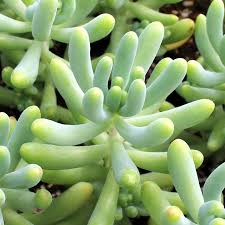Sedum X Rubrotinctum Clausen profile
Written by Maggie
Jan 26 2021
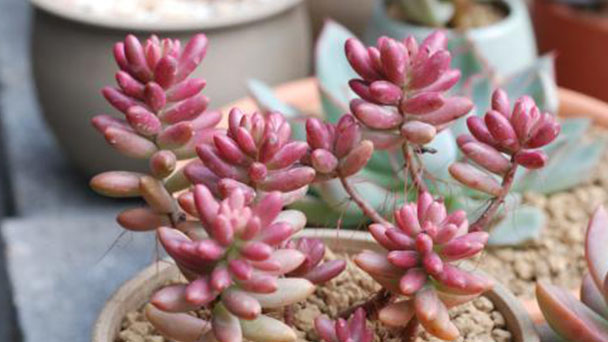
Sedum X Rubrotinctum Clausen also called jelly bean plant, pork and bean succulent, sedum pachyphyllum, is a succulent perennial herb with fleshy leaves, long elliptic, ca. 1 cm long, alternate. The flower is yellow, star-shaped. In the autumn and winter season, under strong light, leaves partially or completely turned bright red. Sedum X Rubrotinctum Clausen is a sociable plant with leaves that turn red or pink when exposed to plenty of sunlight, making it ideal for combining plants. Reduce watering during summer dormancy. Sedum X Rubrotinctum Clausen is mainly propagated by leaf insertion, with fast propagation speed and high survival rate.
Types of Jelly Bean Succulents (Sedum X Rubrotinctum Clausen) Pictures
Blue Jelly Bean Succulent
blue jelly bean succulent
Green Jelly Bean Sedum
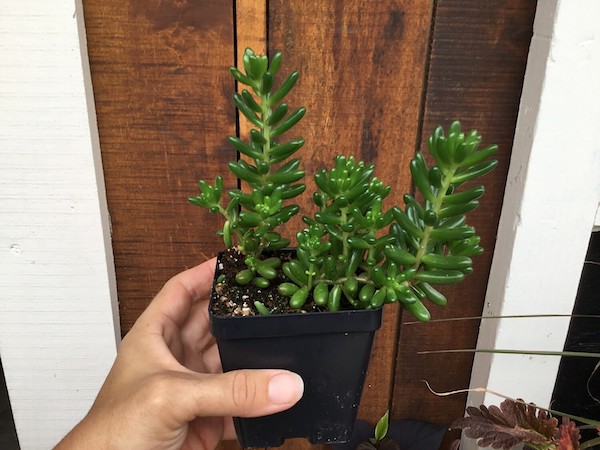
green jelly bean sedum
Red Jelly Bean Succulent
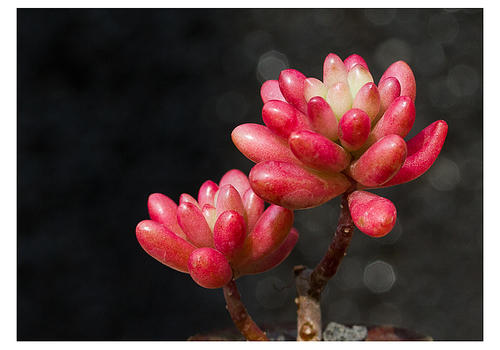
red jelly bean succulent
Pink Jelly Bean Succulent
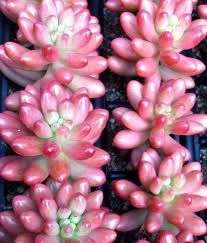
pink jelly bean succulent
Morphological characteristics of Sedum X Rubrotinctum Clausen
Sedum X Rubrotinctum Clausen (jelly bean plant) is a succulent perennial herb. The plant is 10-20 cm tall, much-branched. Fleshy leaves are swollen alternately, cylindric to ovate, 2 cm long, green, cuticle bright, without white powder, reddish brown under sunny conditions, florets yellowish red.
Sedum X Rubrotinctum Clausen growing environment
Sedum X rubrotinctum Clausen is hardy and not afraid of the hot sun. The redder the leaves, the redder they get, the less shade they need to get in the middle of summer. Sometimes the leaves of Sedum X Rubrotinctum Clausen vary in color from red to green depending on the intensity and duration of sunlight exposure. New leaves tend to be red at the top and green at the rest because of the short duration of light. sedum x rubrotinctum clausen prefers warm and diurnal temperatures. sedum x rubrotinctum Clausen has strong adaptability to temperature and can grow well between 10℃ and 28℃.
The distribution of Sedum X Rubrotinctum Clausen
Sedum X Rubrotinctum Clausen is an artificial hybrid and therefore not distributed in the wild.
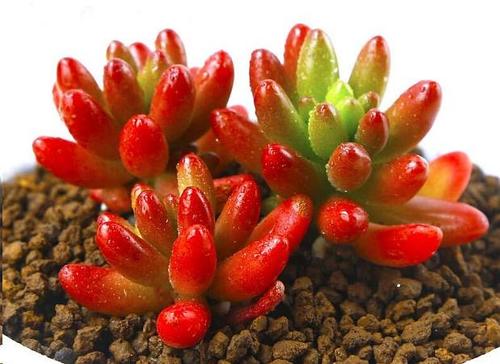
Sedum Rubrotinctum “Pork and Beans” Care
Sedum pork and Beans are succulent plants with a high appearance but are easy to rear and die. So how to care sedum pork and beans? Start with soil, water, light, temperature, and fertilizer. In addition, proper sedum rubrotinctum propagation is also important. The jelly bean plant is extremely easy to survive using either a leaf or a stem propagation.1. Proper soil
Sedum pork and beans are meaty and don't require much soil. What they need most is air. The substrate can be a mixture of cinder and peat, which is not only fertile, but also breathable and drainage so that plants can grow better.2. Water properly
Sedum pork and beans are drought-resistant and watertight. They're usually dry and wet when watered. Water once a week in spring and autumn; Summer time can be 1 ~ 2 days watering, but the amount of water to reduce appropriately; Water it once every 1 ~ 2 weeks in winter. Water thoroughly and avoid root rot due to stagnant water.3. The light is good
Proper light is extremely important for the growth of Sedum pork and beans, which require plenty of sunlight. However, in summer, when the temperature exceeds 35℃, it may cause sunburn, so proper shade ventilation is needed. Mild sunshine in other seasons is totally acceptable.4. Control the temperature
The temperature suitable for the growth of sedum pork and beans is between 8℃ and 28℃. If you exceed this temperature range, the growth will slow down or even stop. Add light to the leaves of Sedum pork and beans and they'll look great in bright red when the temperature drops in late fall.5. Apply fertilizer rationally
To make Sedum pork and beans pop, you need to fertilize them properly, usually with organic fertilizer once every half a month, and water them with fermented pork and beans. Also can go to the flower market to buy the special fertilizer succulent, this will be more suitable for the growth of succulent. Find out how the succulent sedum pork and beans are raised and can't be dropped.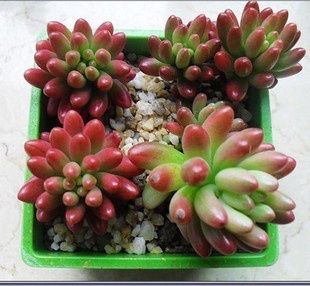
Jelly Bean Succulent Propagation
1. Leaf insertion and propagation
Sedum pork and Beans leaves are easy to live on. Remove the leaves from heavy plants during the growing season and let them dry in a cool place. Then place them in a slightly moist pot, stay moist, and if the temperature is right, they'll root quickly. When the root system grows to 2 ~ 3 cm, the jelly bean plant can be transplanted.2. Stem propagation
Cut the stems and leaves of Sedum jelly bean plant directly, leave the roots in the soil, and then re-cut the stems and leaves after the wound is dried. In the cutting process, spray the solution of carbendazole to sterilize, avoid infection of stem and leaf, after a period of time, the root will grow new stem and leaf, and the stem and leaf of cutting after a period of time can also grow the root system.Common Diseases and Pest Control of Jelly Bean Plant
1. Scale insects
A common pest on Sedum jelly bean plant is the pita bug, which is usually white and is usually caused by overwatering, stagnant soil, and poor ventilation. If the amount is small, it can be killed manually. If the amount is large, it is necessary to spray special agents for prevention and control.2. Stem rot
The most common diseases of Sedum pork and beans are stem rot, which is also caused by improper watering and poor ventilation and can cause the stem rot of the plant. It needs to be detected and treated in time, otherwise the plant will die. Topsyn solution can be applied to the affected area, will be quickly effective.Latest Updated
- Benefits of Bugleweed - 7 Science-backed Health Benefits
- Bugleweed Dangers & Side Effects - Is It Poisonous?
- How to Plant Evergreen Trees - What You Should Know
- When to Plant Evergreens - Grow Guide for Evergreen Trees
- 12 Wonderful Evergreen Shrubs for Your Garden
- 12 Popular Evergreen Plants with Pictures for Beginners
- When And How To Prune A Lilac Bush Like a Pro
- How to Grow & Care for Lilac Vine (Hardenbergia Violacea)
- Japanese Lilac Tree (Syringa Reticulata) Care & Propagation Guide
- Shumard Oak Pros and Cons - What to Know
Popular Articles
- Winter maintenance of Antirrhinum Majus
- How to Grow Terminalia Mantaly Tree
- How to Grow and Care for Crossostephium Chinense
- How to grow Antirrhinum Majus in spring
- Peristeria Elata (Dove Orchid) Profile: Info & Care Guide
- Underwatered Snake Plant (Sansevieria Trifasciata) - Signs And How To Fix
- How to Care for Brazilian Jasmine Plant (Mandevilla Sanderi)
- How to Grow & Care for Graptopetalum Purple Delight in Summer
- Rosa Chinensis (China Rose): Plant Growing & Care Tips
- How to Care for Baby Sun Rose (Aptenia Cordifolia)
